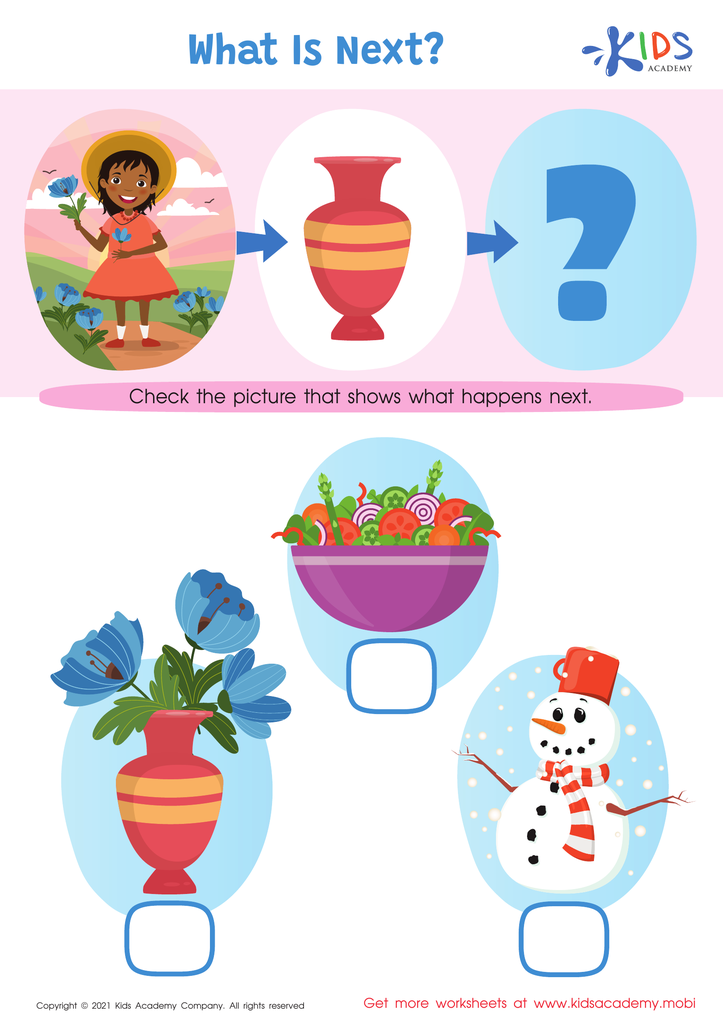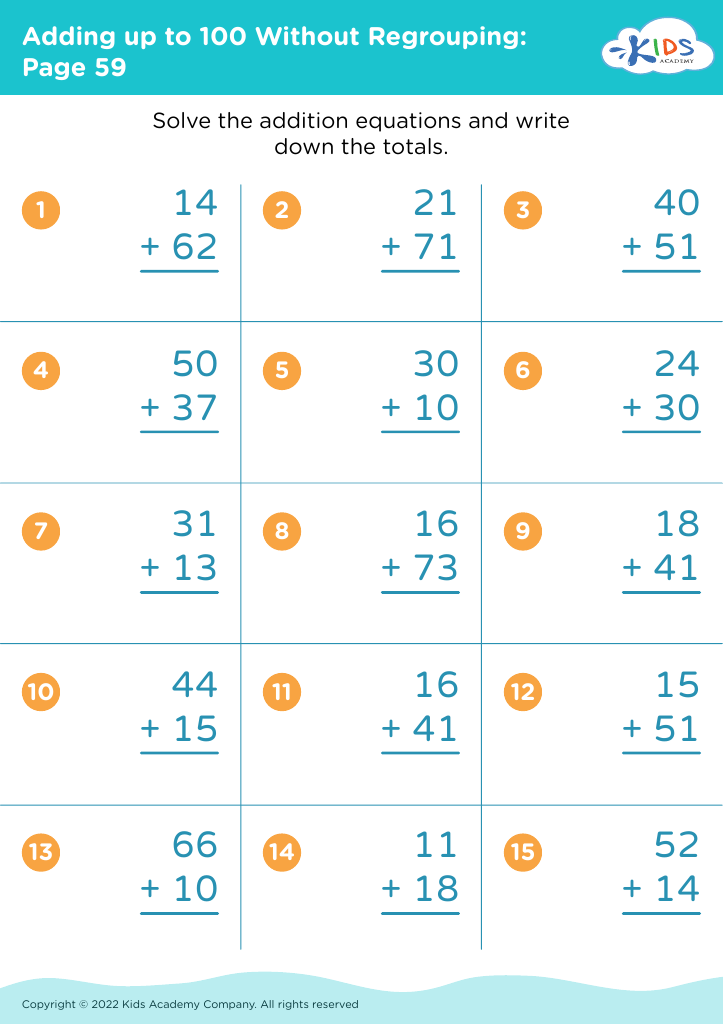Sequence comprehension Worksheets for Kids
2 filtered results
-
From - To


What is Next? Worksheet
Question/Answer
What are some effective activities to train students’ Sequence comprehension skill when teaching them about Adding up to 100 Without Regrouping?
To train students in sequence comprehension for adding up to 100 without regrouping, employ activities such as number line hops, sequencing number cards, fill-in-the-blank sums worksheets, and interactive games like "Race to 100" using dice. Incorporate story problems that follow a sequence, and use visual aids like charts or bead strings to visually represent addition sequences.
How to test a Grade 2 student’s Sequence comprehension skills?
To test a Grade 2 student's Sequence comprehension skills, provide them with a simple story or a series of pictures. Ask them to either retell the story or arrange the pictures in the correct order. Assess their ability to understand and articulate the beginning, middle, and end of the story accurately, highlighting the logical sequence of events.
What does the Sequence comprehension skill mean when it comes to Grade 2 Adding up to 100 Without Regrouping learning?
The Sequence comprehension skill in the context of Grade 2 Adding up to 100 Without Regrouping involves understanding and applying the order of steps necessary to add numbers up to 100.


.jpg)










